For the better part of the last four decades, since we moved to our current home in 1970, my family and I have been regular attendees of the Sunday anticipated masses every Saturday evening in the Guinhawa Chapel along the main road from Malolos to Plaridel, in Barangay Guinhawa, Malolos, Bulacan.
There have been lengthy periods, especially in the 1970’s, when masses here were celebrated only on special occasions, such as fiestas and Christmas Day. In the 1980’s, there were many times when due to a shortage of priests, only so-called “dry masses” – where a deacon would celebrate mass with pre-consecrated bread and wine – were held here.
Things markedly improved in the early- to mid-1990’s when Barangay Guinhawa, which had been part of the Barasoain Parish since its establishment in the 19th century, became part of a new parish, the Hearts of Jesus and Mary, whose parish church was erected on donated land inside San Felipe Subdivision in neighboring Barangay Mojon.
From then on, weekly masses were the rule rather than the exception, and many Guinhawa natives, including my family and I, slowly adopted the habit of going to Saturday evening mass in the Guinhawa Chapel, walking distance from most parts of the Barangay, rather than Sunday morning mass in the more distant parish church.
Though no marker could be found, the Chapel itself is probably a 1960’s structure, dedicated to Our Lady of Remedies, a convenient pun on the name of the Barangay. In the 1990’s, the Chapel was extensively renovated, with a handsome marble tile floor installed, among other improvements.
The Chapel’s devotional images are presumably contemporaneous with the Chapel’s original construction. These include an image of Our Lady of Remedies, a Crucifix, and a Holy Child. When new, they were presumably decent and appropriately devotional. Over the decades, however, they were subject to generous though inappropriate endowments, including the usual folksy and frilly garments,
but perhaps worst of all, the gratuitous application of clear plastic varnish on all the images, resulting in a strange glazed appearance.
It did not help at all that somewhere along the way, they also got encased in charmless glazed urnas, perhaps more suited as estantes in an old-time general store from our grandparents’ generation.
As a regular mass-goer, often seated in the front pew, I had ample opportunity to stare at these images in their "evolved" state. After many years of doing so, I felt that I had enough, and resolved to organize the restoration of the Marian and Holy Child images. I also came to the conclusion that the Crucifix was simply too small given the length of the nave of this Chapel,
and that a larger one ought to be commissioned for it.
Therefore, two years ago, on May 5th, 2007, I brought prolific religious image maker and restorer Mr. Kiko Vecin to the Guinhawa Chapel to conduct an assessment of the task at hand. He quickly agreed that the images of the Blessed Mother and the Holy Child should be transported to the Vecin Workshop for a thorough restoration. He also took measurements of the altar and viewed the length of the nave to assess what size Crucifix would be appropriate for this space.
Mr. Vecin decided that an eight-foot cross with a four-foot corpus would be about right, especially given the height and width of the altar wall. In fact, the wall, and the entire chapel itself, is very narrow, with a uniform width from gate to sacristy of just six meters.
But despite its narrowness, the Chapel's relatively great length really called for a much larger Crucifix than the one currently in place, to ensure that those seated even in the back row could see it well.
Back in the Vecin Workshop in Makati, the images of the Blessed Mother and the Holy Infant were examined thoroughly. The Marian image was of the traditional “de bastidor” (hoop skirt) type.
It was generally well-sculpted by its anonymous maker
and was in relatively good condition
except for the “wig burns” that stained its forehead.
After removal of its frilly garments, the Santo Niño was found to be in worse shape, with a narrow crack down the front of its detailed wooden body
and exhibiting the resulting facial treatment of the aforementioned varnishing.
By the end of August 2007, the new Crucifix, with a four-foot corpus, had already been sculpted.
And by the end of the following October, the Our Lady of Remedies had been completely repainted in oil, replacing the previous enamel paint.
The Santo Niño had been slightly resculpted, the crack filled in, and a new more appropriate base made.
And the corpus of the new Crucifix had already been oil-painted.
The Barangay Fiesta (of Our Lady of Remedies) in late November being just a few weeks away, the images were completed just in time for their return to, and reinstallation in, the Guinhawa Chapel a few days before the feast day itself.
As I was living and working abroad throughout most of the latter part of 2007, I only got to see the refurbished images when I returned for the Christmas break. After the usual Saturday evening mass on December 15th, 2007, I got to photograph the remade-over image of Our Lady of Remedies
with new wig, new metal accessories, and new garments, all from the Vecin Workshop
and, thankfully, no longer in its previous foursquare urna.
The Holy Child Jesus of Prague image had been smartly refurbished, with tasteful and selective gilding of its wooden frontal and its base
The Holy Child Jesus of Prague image had been smartly refurbished, with tasteful and selective gilding of its wooden frontal and its base
and a new cloth cape, also from the Vecin Workshop.
But the best of the new arrivals was definitely the larger-scaled Crucifix, perfectly fit to the space on the altar wall, in the classical Spanish-Filipino colonial style most representative of the Vecin Workshop’s prodigious output.
The resulting altar was contemporary yet tasteful
with images that were classically-styled yet simple.
The Guinhawa Chapel thus entered the New Year of 2008 appreciably improved, at least in the aesthetics department.
(Continued here.)
Originally published on 24 April 2009. All text and photos copyright ©2009 by Leo D Cloma. The moral right of Leo D Cloma to be identified as the author of this work has been asserted.
Original comments:
antigualla wrote on May 13, '09
Bravo, :Leo! That's really putting your passion (and money) at work for the good of the community. How blessed are the faithful of Guinhawa. I'm doing (trying to, anyway) the same thing with my santos and my parish here in Cebu.
Really, there can be no greater satisfaction for me than to know that people are moved to piety by my Paso images. Nawawala talaga lahat ng pagod ko pag nakakarinig ako ng mga komentaryong "Nakakaawa naman talaga ang mukha ng Panginoon sa larawang ito" or "Talagang ang laki ng pagibig ng Diyos sa tao ano?" Mabuhay ang Sining Pangsimbahan! Mabuhay ang mga nagtataguyod nito! |
rally65 wrote on May 13, '09
Thanks for the appreciation, Louie.
More to come in Part Two of this feature. |
puyat1981 wrote on May 13, '09
You are so generous, Leo. God reward you always.
|
arcastro57 wrote on May 13, '09
What great improvements! Hope some more kindhearted people donate better urnas for the images...
|
victorancheta wrote on May 14, '09
And perhaps a bigger chapel in the future(!??)
You know how we are in Bulacan. Almost every decade, a barrio chapel gets bigger and bigger. The Nino is the most improved to me. Who knew underneath all that frills is a nice, classic, de tallado Christ Child. |
techpen wrote on May 15, '09
wow! great improvements espcially the statues...Leo binago rin pala ang wall ng altar ..for me i luv the old one,yung gold leaf wall with capiz or lattice yata.
|
rally65 wrote on May 15, '09
techpen said
binago rin pala ang wall ng altar ..for me i luv the old one,yung gold leaf wall with capiz or lattice yata.
I agree -- but I was away during the period that that was done, so I was not able to propose the retention and refurbishment of the previous altar wall. Besides, someone in the community offered to donate all that, so I guess that's not too bad after all.
|
rally65 wrote on May 15, '09
arcastro57 said
Hope some more kindhearted people donate better urnas for the images...
Your wish is my command. Ha ha ha. See Part Two.
|
rally65 wrote on May 15, '09
victorancheta said
And perhaps a bigger chapel in the future(!??)
Your wish is my command . . . in the future. See Part Two.
|
techpen wrote on May 16, '09
well infairness classy parin naman...its just that mas maganda yung dati for me..true not bad at all..congratz
|
techpen wrote on May 16, '09
perhaps pwede rin ang MARIWASA 20x20 ceramic glazed tiles color maroon para sa wall ng altar and take note with listel around the corner hahahaha...eeeewww a lot of chapels nowadays are like that,who knows mapag isip isip mo in the near future tutal generous ka naman hahaha...nothing serious just kidding..one word for you "BRAVISSIMO''
|
rally65 wrote on May 17, '09
techpen said
well infairness classy parin naman...its just that mas maganda yung dati for me..true not bad at all..congratz
The old altar wall was in bad condition because it was quite old -- it dated to the last renovation perhaps fifteen years ago or so.
I'm guessing that they felt that it would be too difficult to restore -- it required looking for the original wallpaper design, which perhaps isn't sold anymore. That's probably why they replaced it with the wood-paneled design in this last renovation in October-November 2007. |
rally65 wrote on May 17, '09
techpen said
perhaps pwede rin ang MARIWASA 20x20 ceramic glazed tiles color maroon para sa wall ng altar and take note with listel around the corner hahahaha...eeeewww a lot of chapels nowadays are like that,who knows mapag isip isip mo in the near future tutal generous ka naman hahaha...nothing serious just kidding..one word for you "BRAVISSIMO''
I think that they will consider Mariwasa tiles indeed (among other options like marble tile cladding) for the new altar wall when the time comes to renovate the altar and nave.
The floor of the nave has to be raised by roughly a meter to make it higher than the street outside, so the altar wall will definitely have to be modified anyway. |

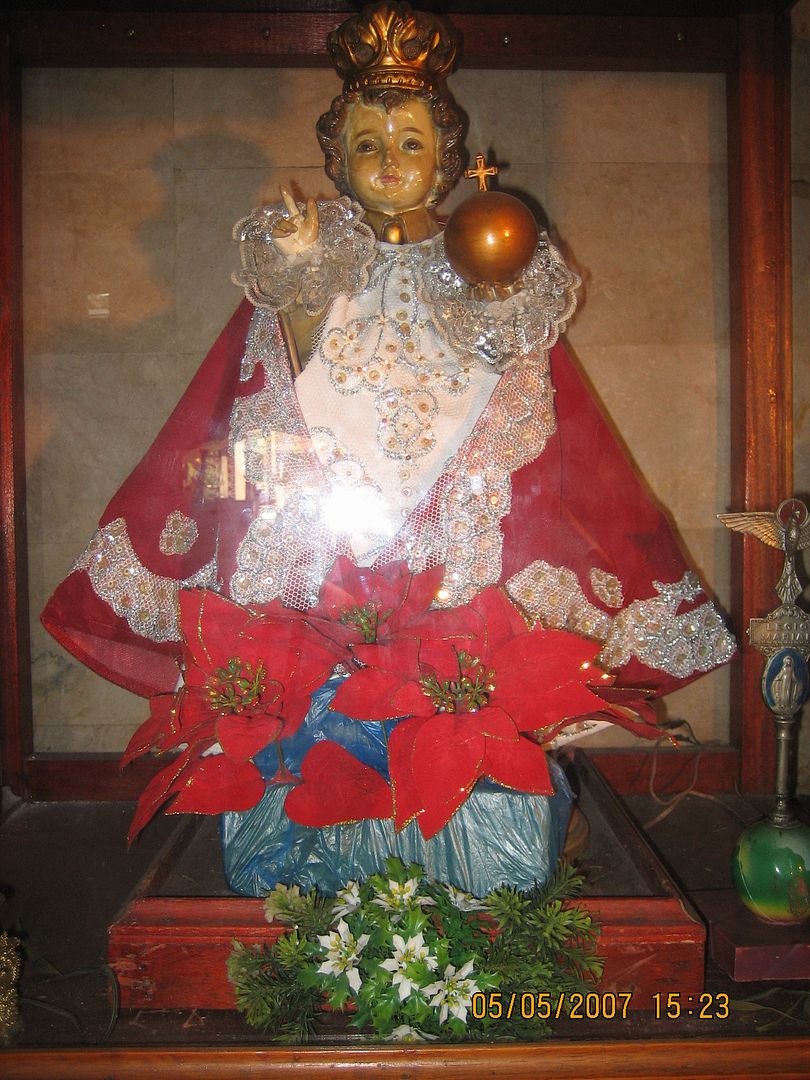
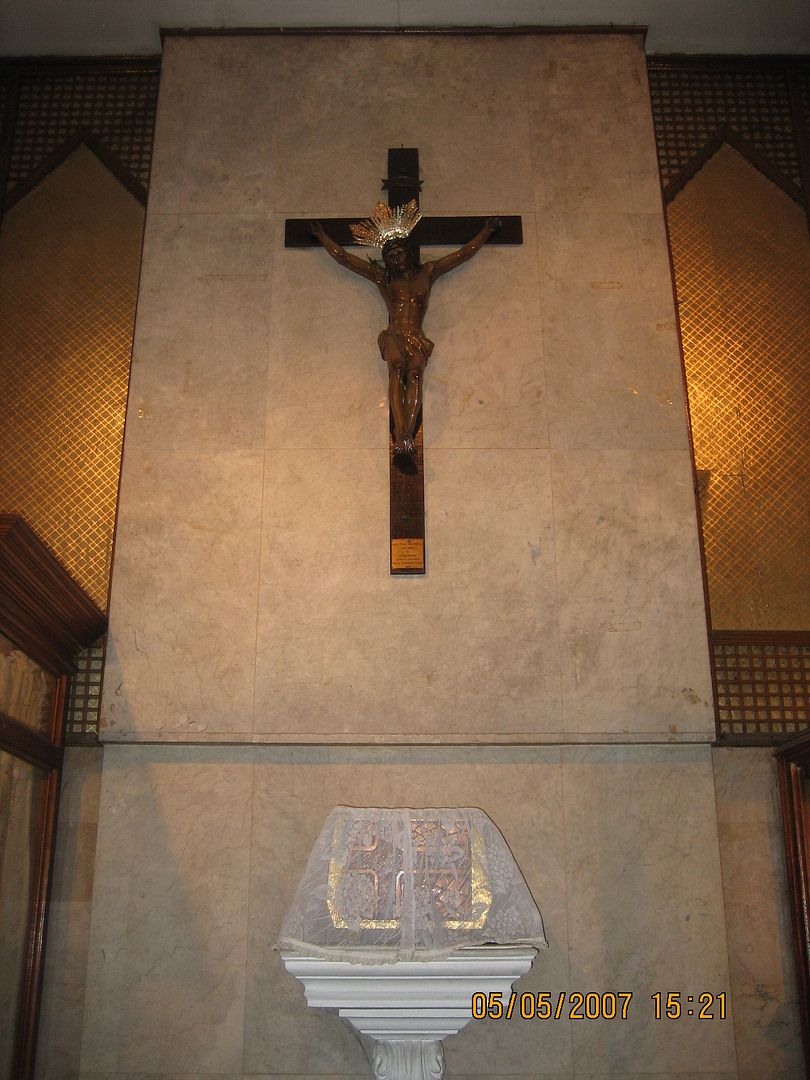

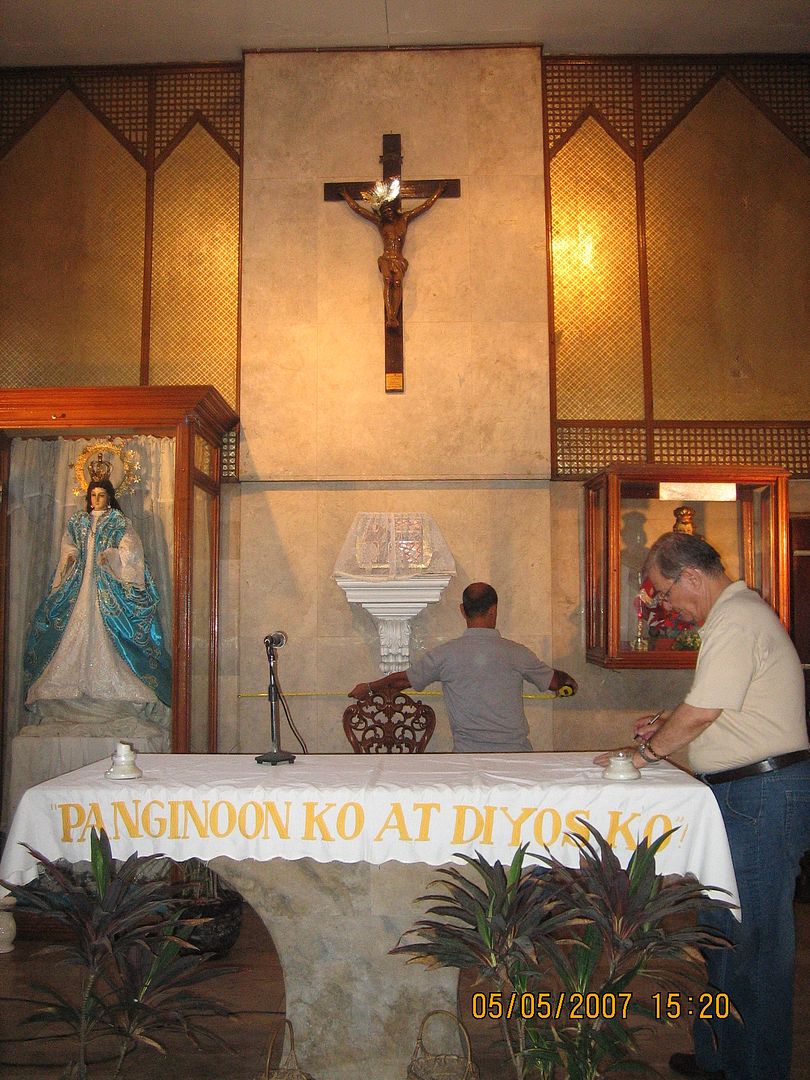
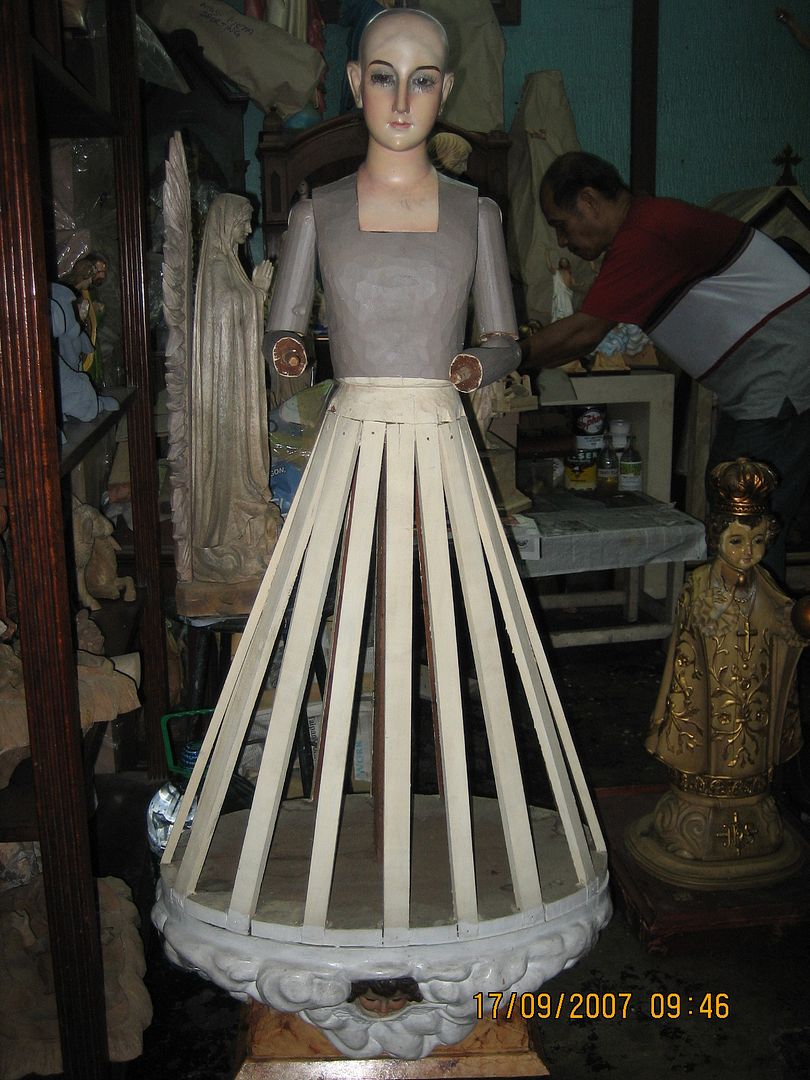

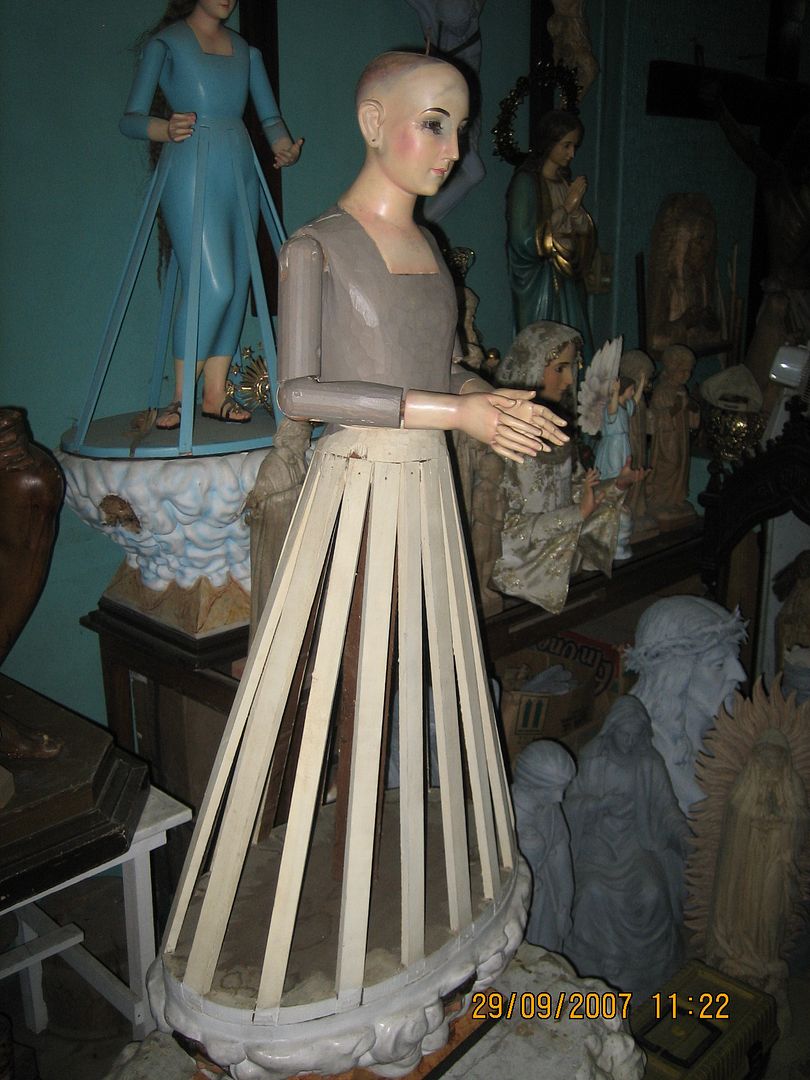
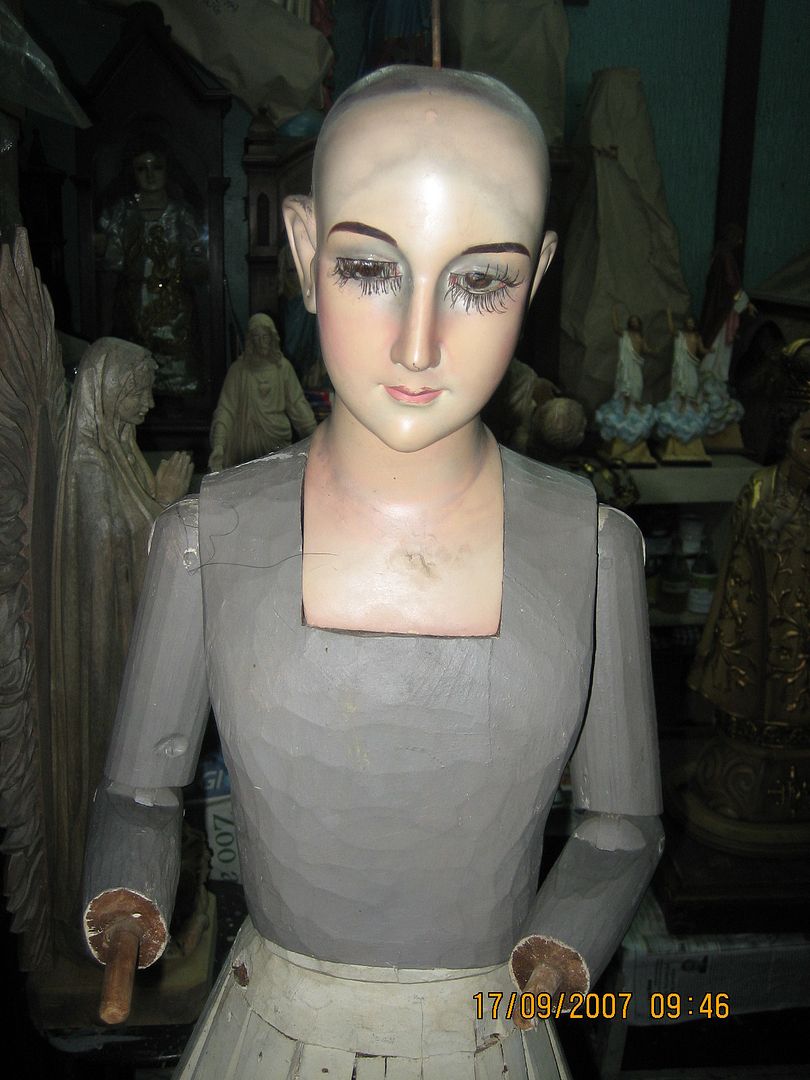
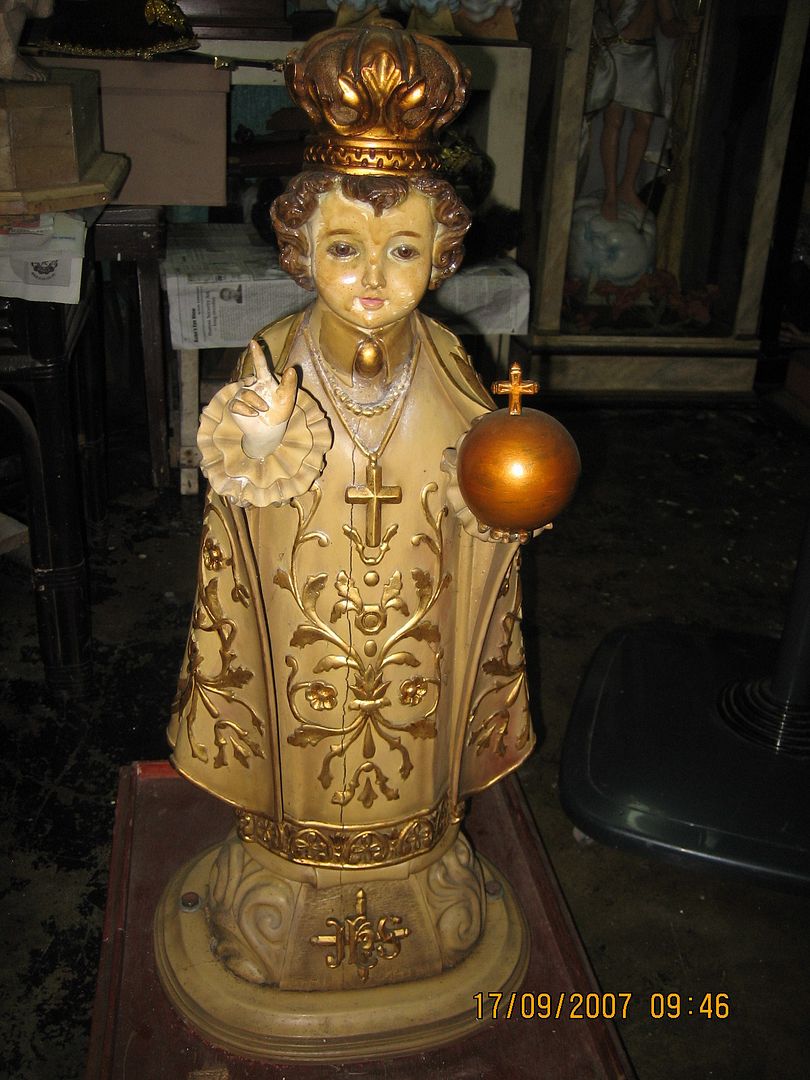


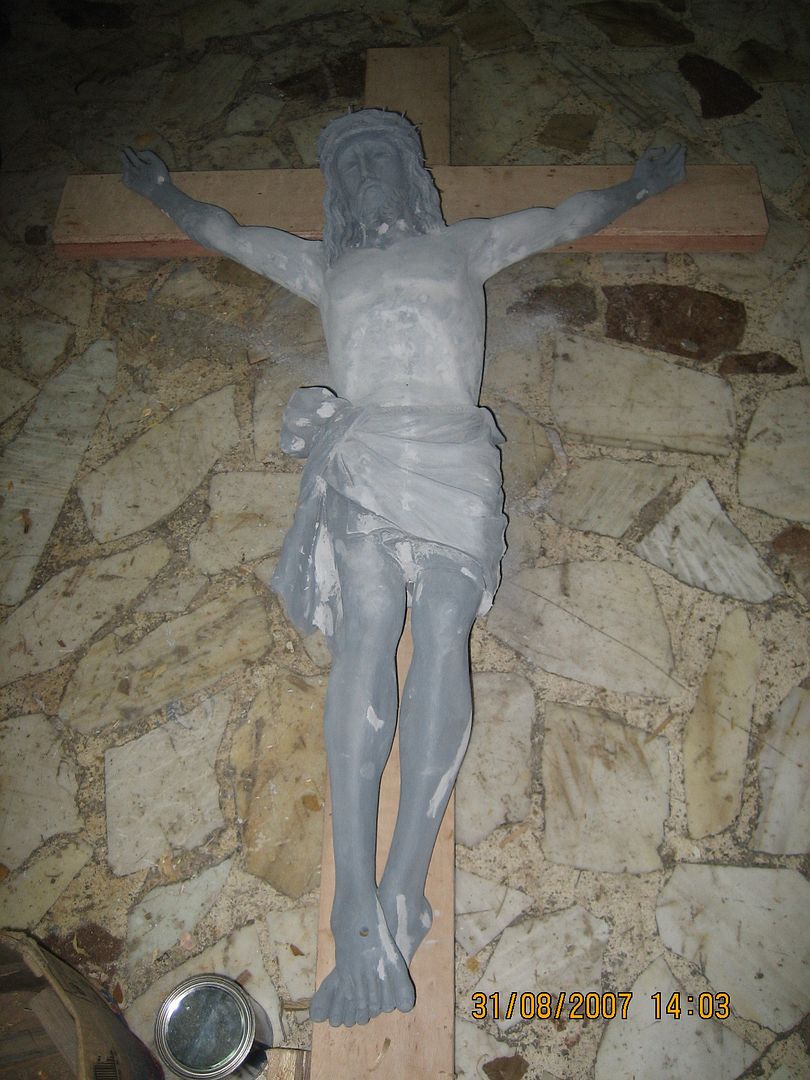
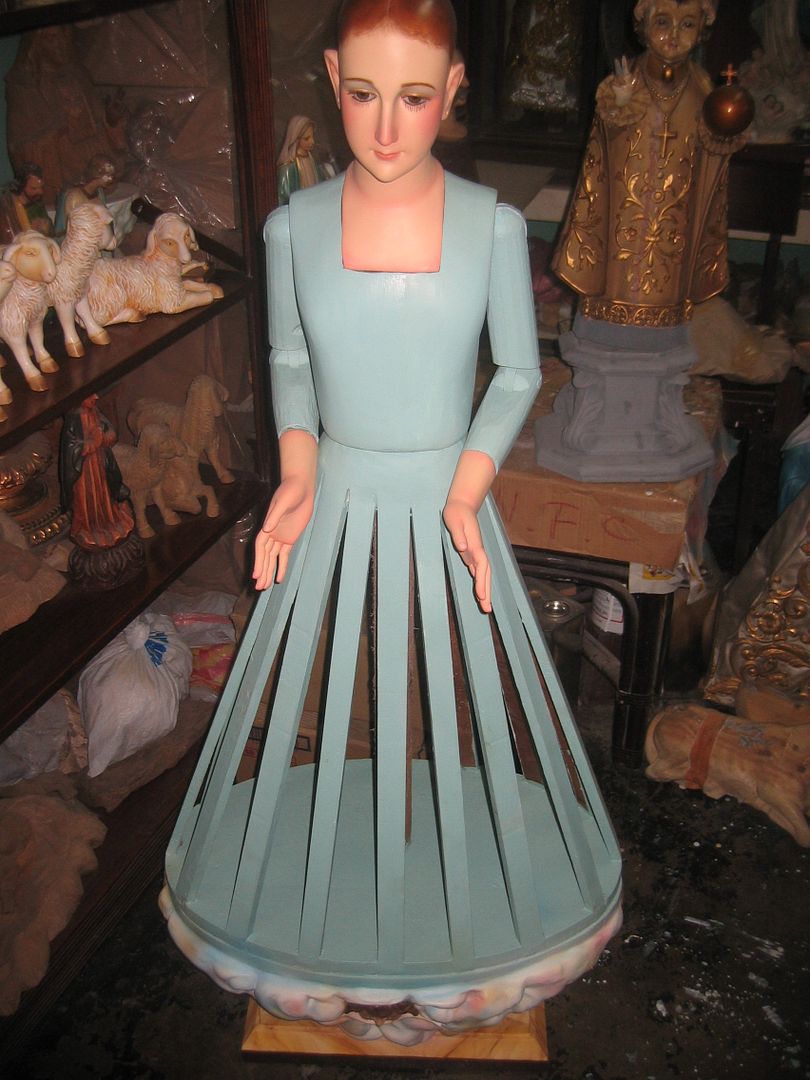
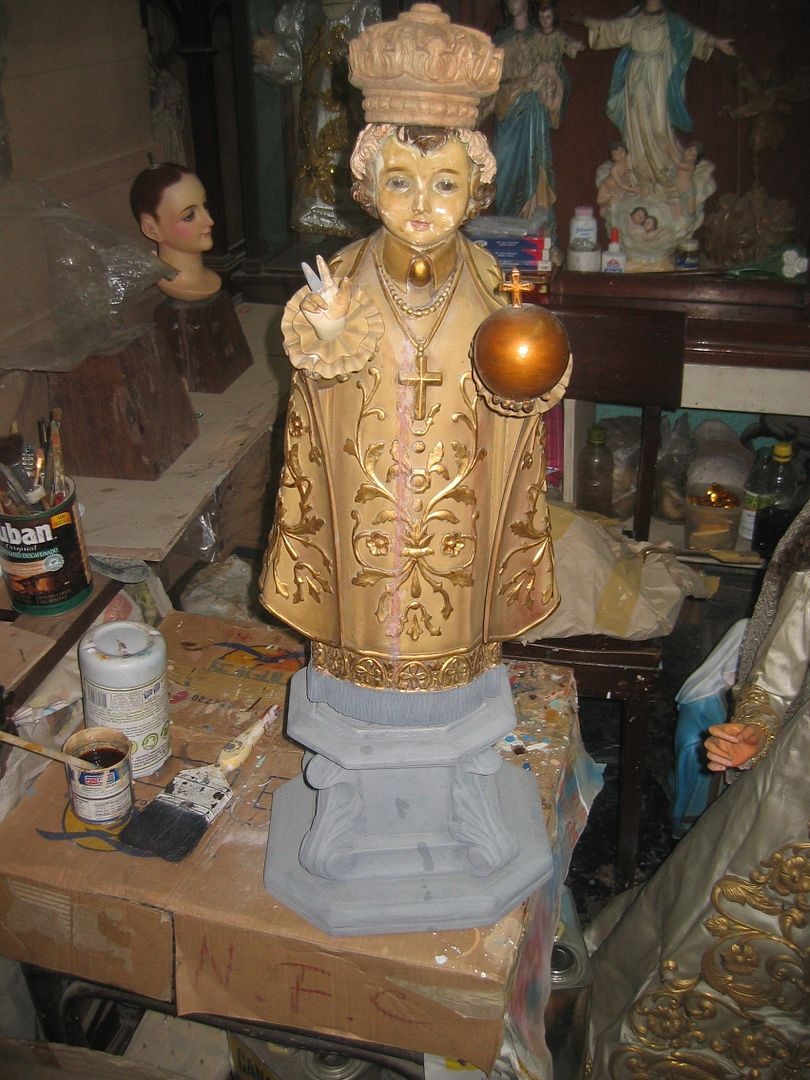
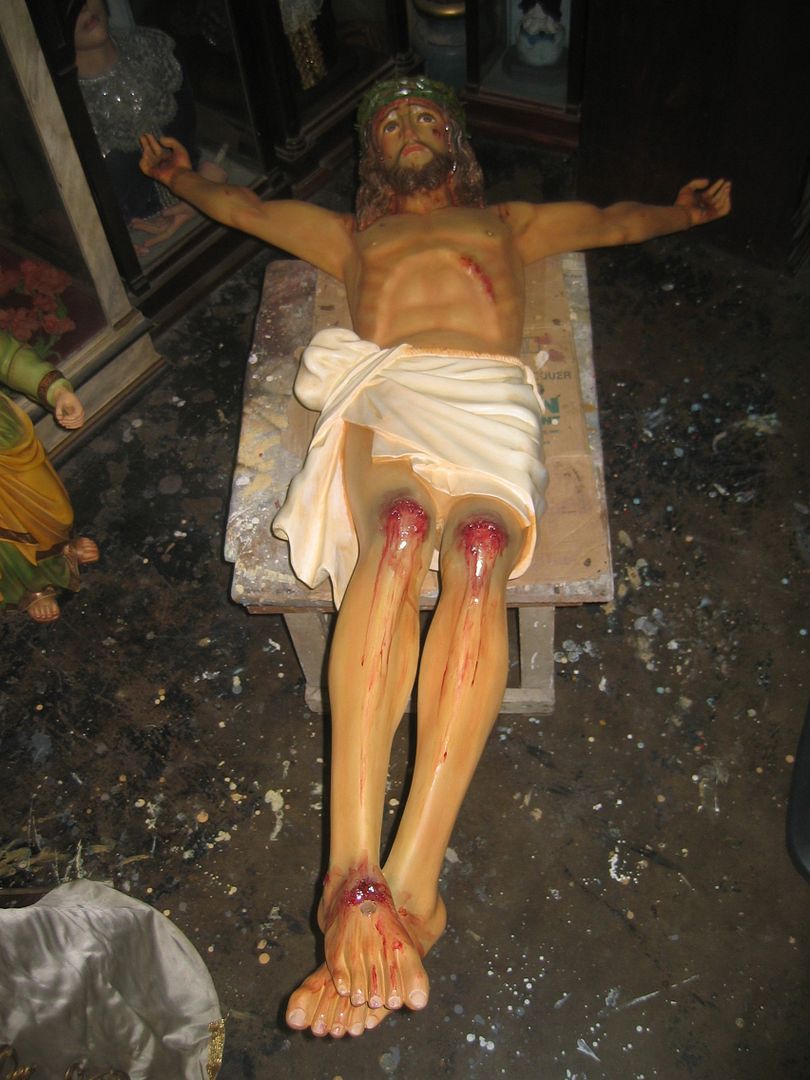


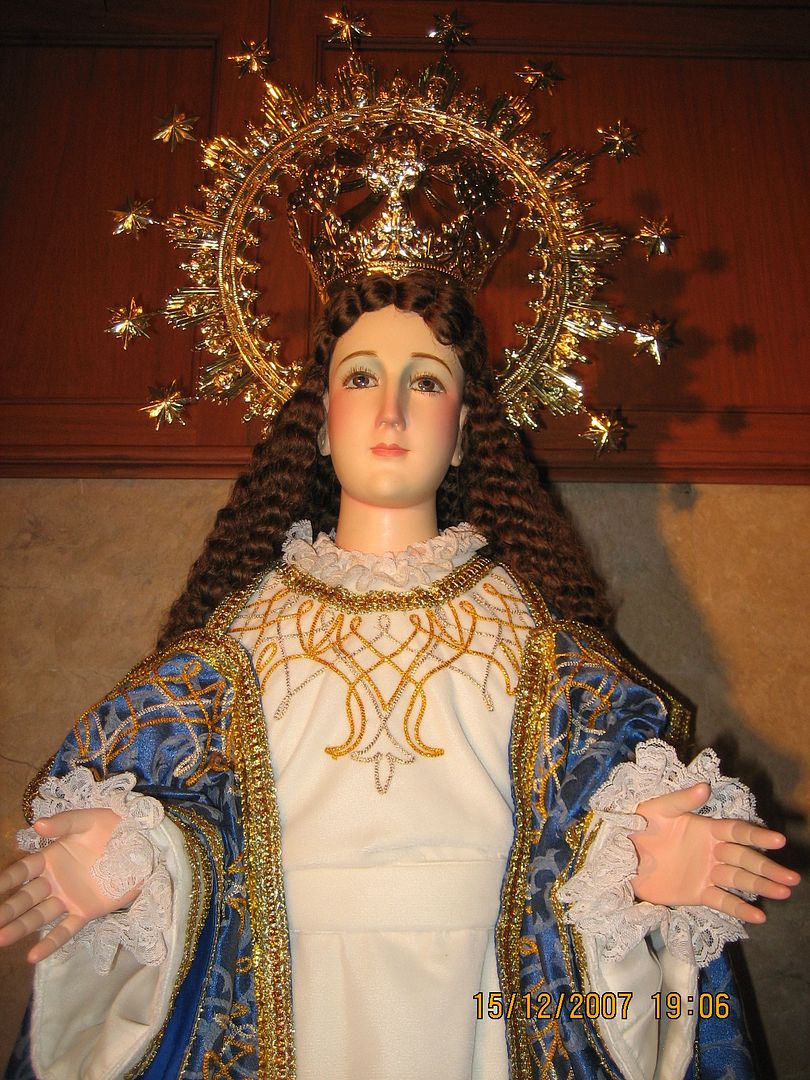
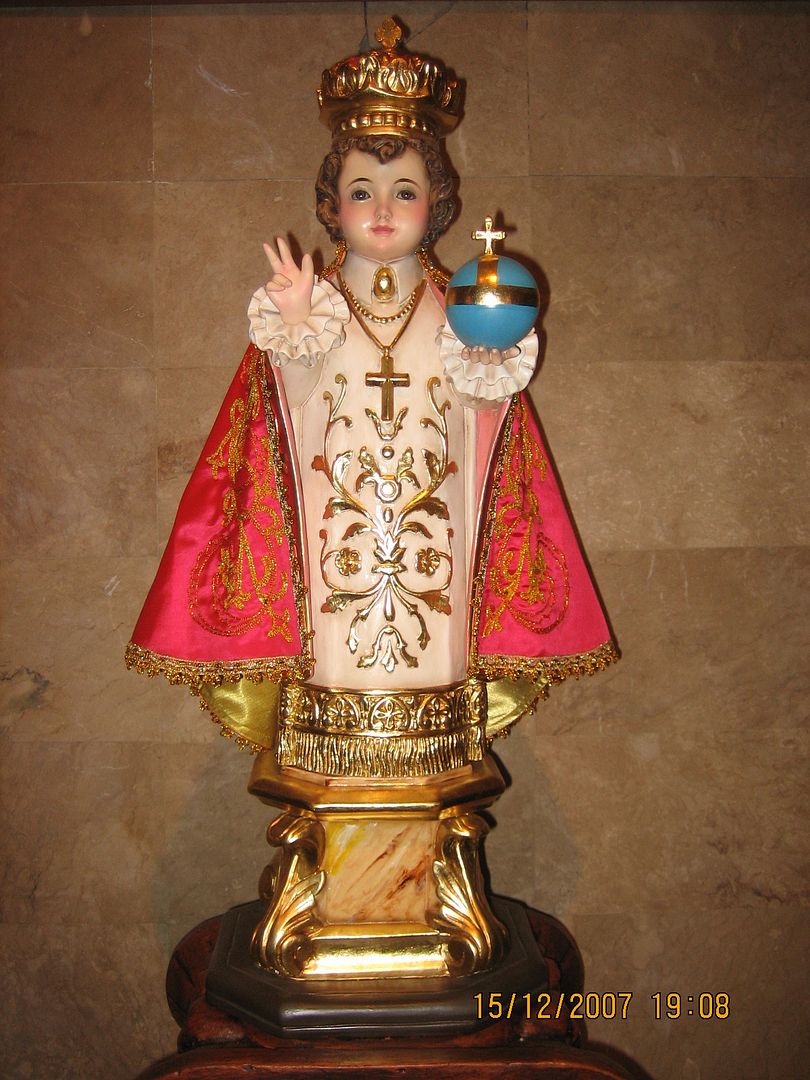


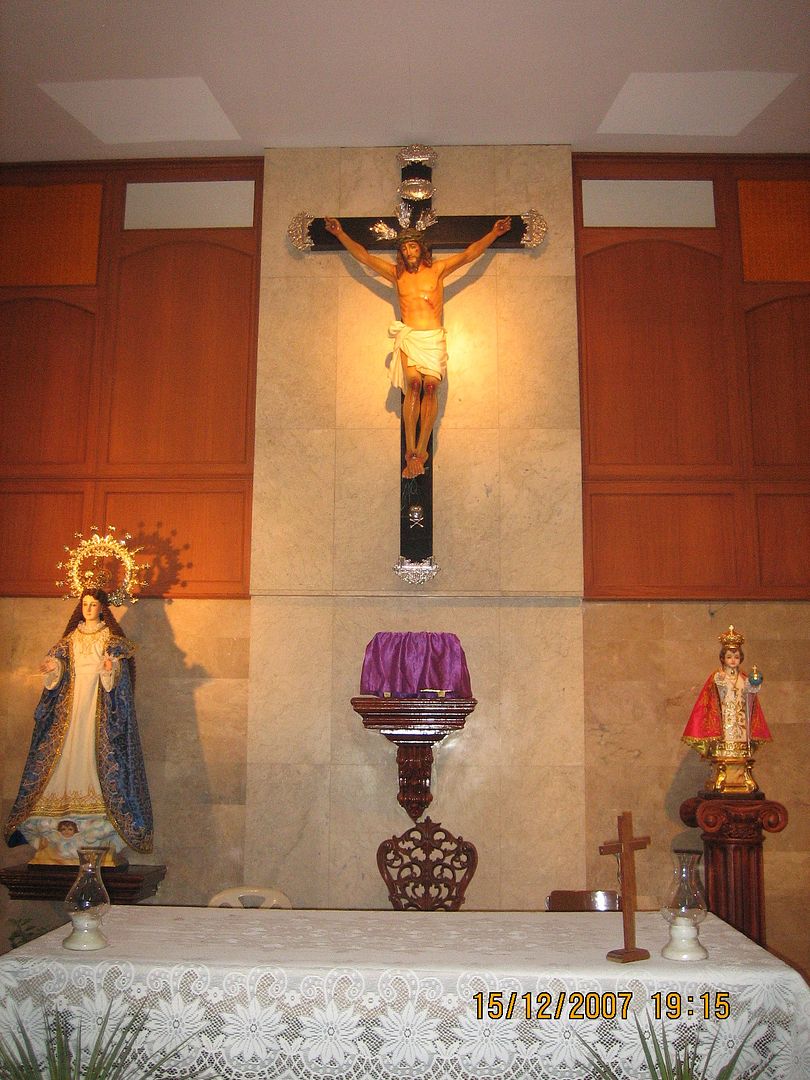
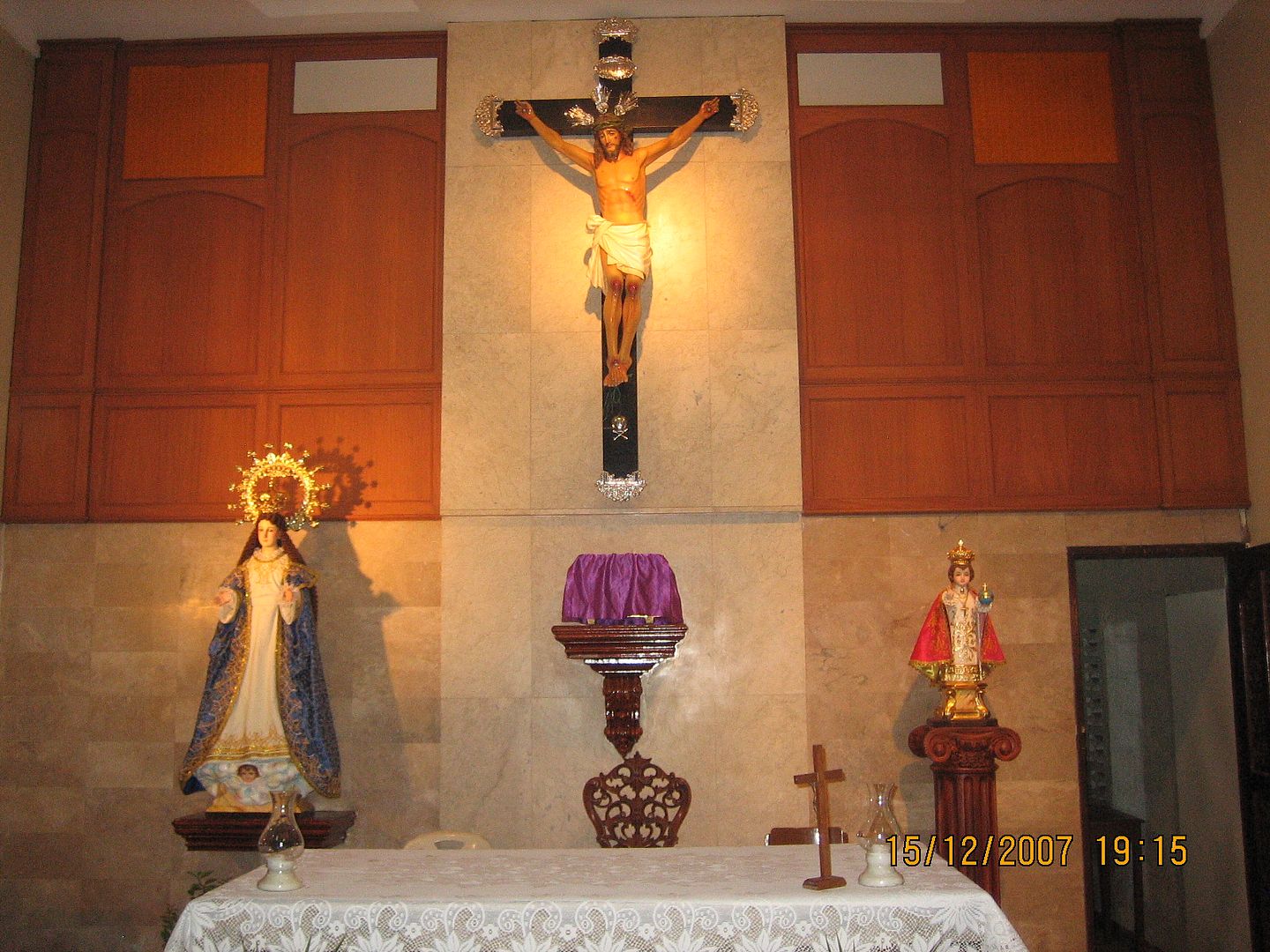
No comments:
Post a Comment